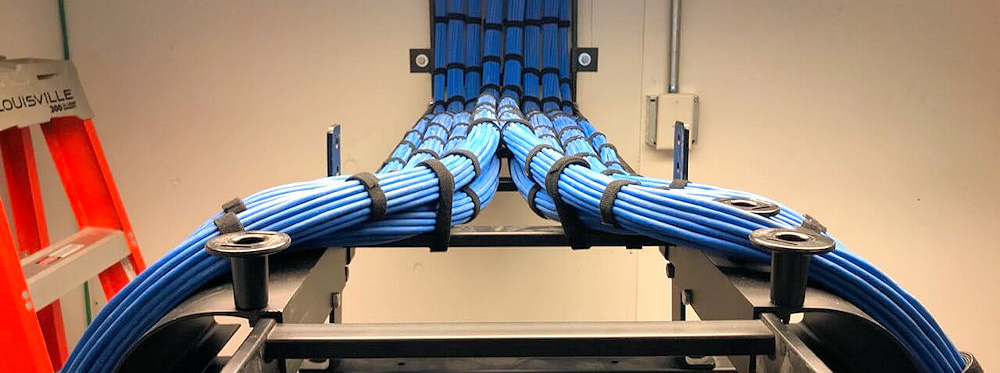Structured Cabling Products
What is structured cabling system?
Better Traffic Management and Filtering: Properly installed cabling systems can improve the efficiency of traffic management and filtering. This is particularly important if you have sensitive data on your network or if there are many users.

What are the 2 main standards of structured cabling?
The principles of structured cabling are to use standardized wiring and components, organize cables into categories corresponding to their function, and installing the cables in a planned sequence. Structured cabling system is a network wiring installation comprising of distinctive components: the cable, connectors, and systems. Organization of the cables and their placement in order to minimize noise, RF interference and prevents unauthorized use.
Neighborhoods We Service
We've been providing Structured Cabling & Data Cabling to our friends in Dallas starting in 2006. From Tx State Highway 75 to I635 & I30 / I20, we've serviced clients in neighborhoods like:
Dallas Downtown Historic District - Deep Ellum - Far North Dallas - Uptown - South Dallas - Bishop Arts District - Lake Highlands - West Dallas - Arts District - Preston Hollow
Gladly Servicing The Amazing Texas Town of Dallas
Our Dallas Office
Find Us On The Web!
Call us today to get started with your FREE Structured Cabling Evaluation & Estimate by calling us direct (number listed below) or visit us online. Call: (214) 251-5237 Internet site: https://shelbycommunications.com Shelby Communications - 1505 Denise CT, Keller, TX 76248
What is structured cabling and give its types?
Increased security: A properly installed and configured cabling system provides a secure backbone to your network. This can protect your network against unauthorized access, theft, vandalism, and other forms.


What are the six subsystems of a structured cabling system?
Shelby Communications LLC is a Dallas-based cabling company. We provide a range of cabling services including network cable installation, maintenance and repairs. You can also get compatible accessories and cabling products to help you upgrade your network infrastructure. We can help you get started in networking or complete basic repairs. Get in touch with us today to find out more about our services. Structured cabling systems (SCS) are a method of managing and organizing the wiring and communications equipment within an organization. This is often used in buildings that have multiple teams or organizations sharing common infrastructure. It can also be used within centralized networks (architecture). The SCS divides the facility wiring into sections. Each section represents a type of usage.
Does structured cabling is recommended for all Organization Why?
Structured cabling systems (SCS), are organized networks of cables and related components that allow for communication between devices. It uses a numbering system to identify each cable's location, facilitates cable route planning tools and allows for easy installation or maintenance. Structured cabling allows computers and other devices to connect using coaxial, fiber optic, and metal cables. The cables are organized in a structured manner, which reduces interference between devices and improves overall performance. This technology is used by businesses and organizations to connect storage devices, routers, and other networking equipment.


What is a TIA standard?
Structured cabling standards include precision measurement techniques, including impedance and digital signature testing; capability to detect and isolatecancellation signals; and organized cables, cabinets,and fittings. The two main structured cabling standards are IEEE 802.3af and IEEE 802.3at.
What are the six cabling subsystems?
Subsystems are parts of a cabling network that work together to make the connections between devices. Six subsystems make up a structured cabling network: backbone, distribution and wiring. Collector, collector, interface, management are the other five. The backbone cables connect to the interfaces and distribution boxes in the system. The distribution cables carry the information collected from the devices to other locations in the building or network. The electrical signals are carried from one device to the next by wiring cables. A group of wire cables is called a collector cable. It takes the signals from the Network and bundles them together. Interface cables link different types of devices together, allowing for easy access and configuration. Structured cabling systems are managed and controlled by management systems.

What is a backbone cable?
The backbone is the portion of the network cabling which connects across the various rooms and communication panels, carrying the largest number of fibres and normally constituting the longest cable run. Example backbone includes DeviceNet Thick cable.
What is structured cabling and give its types?
In telecommunications, structured cabling is building or campus cabling infrastructure that consists of a number of standardized smaller elements (hence structured) called subsystems. Structured cabling components include twisted pair and optical cabling, patch panels and patch cables.
What are the components of structured cabling?
The six components of structured cabling are Entrance Facilities, Equipment Room, Backbone Cabling, Telecommunications Room, Horizontal Cabling and Work Area.
Which standard is also known as structured cabling?
Which standard is also known as structured cabling? Definition. TIA/EIA Commercial Wiring Standard.
Is structured cabling low voltage?
While lamps and appliances require that standard voltage to run consistently and reliably, much of your home's network and communication wiring is low voltage and the infrastructure of low voltage wiring is also known as structured cabling.
What is Datacenter structured cabling?
What is Structured Cabling? A structured cabling system uses a Main Distribution Area, or MDA, into which all connections are run. The TIA-942 Standard defines the MDA as the central point of distribution for the data center structured cabling system.